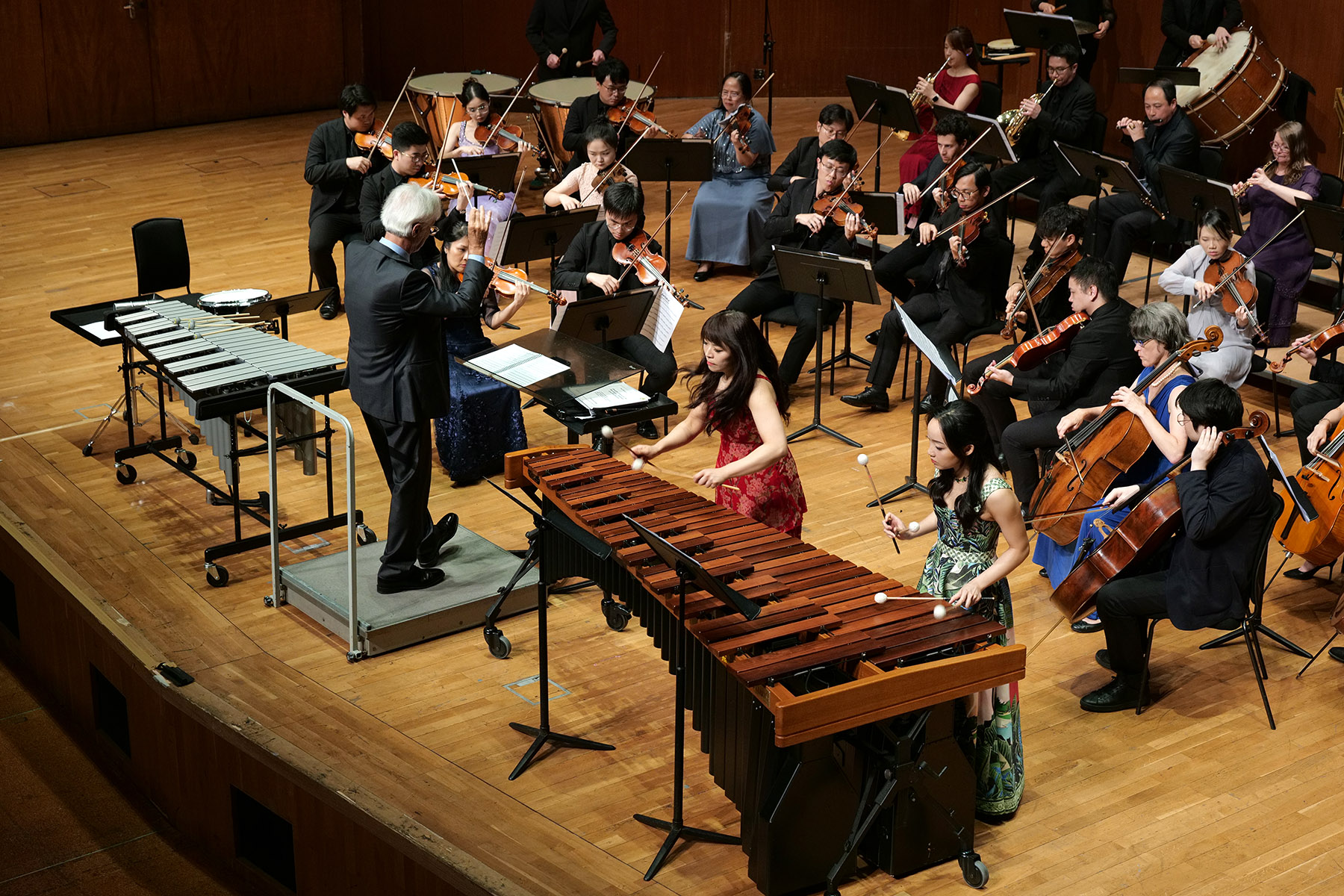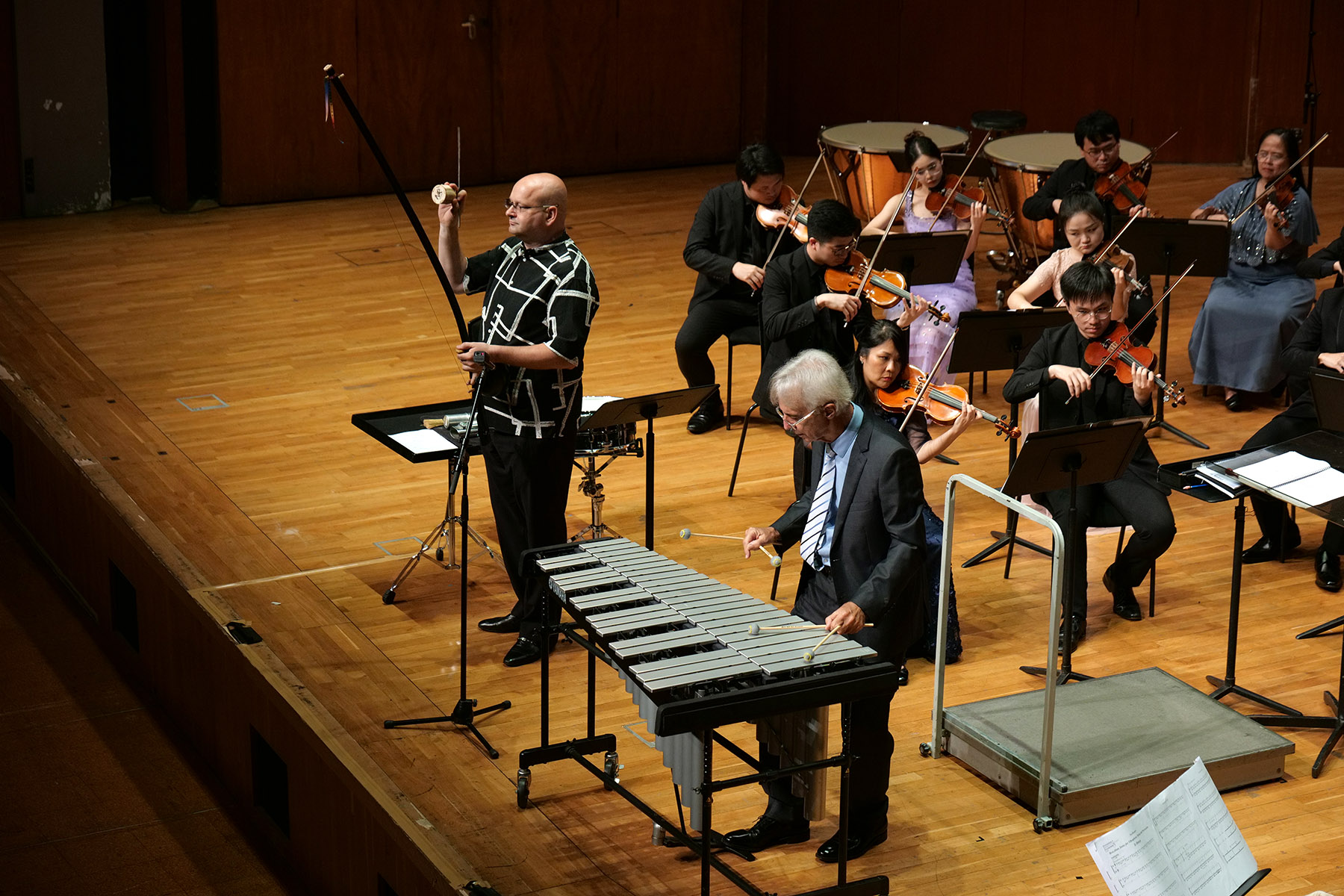
The marimba is a uniquely satisfying percussion instrument to watch when played live. Most musicians are necessarily immobile — either seated to play, say, piano or cello — or simply rendered static by orchestral etiquette. But since a five-octave marimba is usually over 2.5 meters long, players have to pace up and down to reach the scales they play. Hence every step taken is also a visual representation of the notes ascending or descending — as well as the exertion required to produce sounds.
Music fans in Hong Kong had the chance to witness this unique spectacle when two homegrown soloists performed a pair of marimba concertos at Brazilian Fantasy, a special season-closing concert held by the City Chamber Orchestra of Hong Kong, at the Hong Kong City Hall on June 25. Both pieces were penned by Ney Rosauro — an acclaimed Brazilian percussionist and composer who traveled to Hong Kong to conduct his compositions. He also broke a self-enforced performance hiatus, playing two movements of his Brazilian Suite for Vibraphone, Strings and Percussion.
Like much of his music, the piece aims to marry classical instrumentation with the musical sensibilities of his homeland, transplanting Brazil’s familiar folk-dance rhythms to the concert hall in much the same manner as Astor Piazzolla famously did with his Argentine tango compositions. Brazilian Suite’s opening movement, Dança, is built entirely around the rhythm of the capoeira — a performance art form combining dance and martial arts from northeastern Brazil — while the rousing and short Coco movement is based on the samba. On the evening of June 25, the entire piece was driven by CCOHK percussionist Simon Williams’ rhythmic striking of a huge single-string percussion instrument, the berimbau, a device that was as visually arresting as it was musically captivating.
READ MORE: Symphony of youth
Rosauro told the audience that he was nervous about picking up his mallets again and had agreed to perform in Hong Kong only after being implored by team CCOHK. He spent most of the evening conducting a program primarily showcasing his work as a composer.

During the concert, Rosauro let the audience know, with no small sense of hubris, that his breakout Concerto No 1 for Marimba and Orchestra — written in 1986 for his son Marcelo — is today recognized as a part of the instrument’s core orchestral repertoire. Soloist Fiona Foo — also artistic director of the International Hong Kong Percussion Convention — evidently relished the challenge, launching into the propulsive opening statement of the concerto’s first movement Greetings with a palpable intent to impress. Flamboyantly sashaying up and down the length of the instrument, grinning widely in a dazzling dress and gold shoes, she was an image of poise and power, navigating the music’s upbeat twists and turns. Yet the slow second movement, Lament, was the standout — the marimba’s typically light, sun-kissed tones casting a heartbroken spell over a canvas of weeping strings.
Earlier, Elise Liu was a very different picture of composure as soloist on the same instrument, trotting gracefully through the newer Double Concerto for Marimba, Timpani and Orchestra. “I saw her smile!” whispered one audience member, referring to Liu’s steely, studious composure finally broken when she took a bow, with James Boznos — the Hong Kong Philharmonic Orchestra’s principal timpanist since 2000 — beside her.
ALSO READ: Celebrating a low-key instrument
Much of the deliberately light, hummable piece’s best moments were a three-way call and response — the thundering timpani and marimba twangs locked in stop-start exchanges with the jaunty, jovial orchestra behind them. Throughout both lengthy concertos, CCOHK navigated the rhythmically demanding material with ease. The conductor was evidently pleased: “There is nothing better for a composer than hearing his music well-performed.”
The program was rounded out with Rosauro’s rousing tribute to his heroes. He conducted two short, haunting pieces drawn from legendary Brazilian composer Heitor Villa-Lobos’ Bach-inspired suites, Bachianas Brasileiras, and closed the evening with Oscar Lorenzo Fernandez’s Batuque (Danza di Negri) from the suite Reisado do Pastoreio. Introduced by Rosauro as “Brazil’s second national anthem”, this galloping piece of pomp would have made a suitably upbeat close to Brazilian Fantasy. But after a lengthy ovation, Rosauro was coaxed back behind his instrument one last time, performing a stirring solo encore from his charming Brazilian Landscapes suite.


